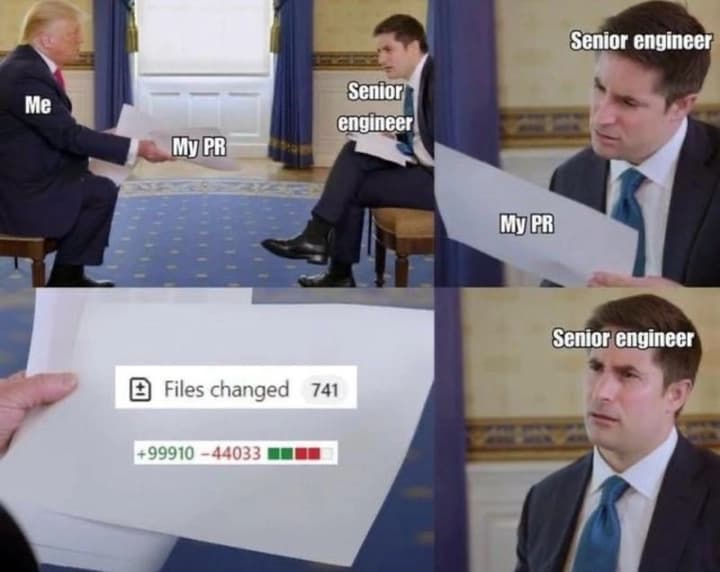Avoid the "Massive PR" Trap: Best Practices for Pull Requests
Mai Thy Nguyen
November 12, 2024
2 mins read

Ever submitted a pull request (PR) with hundreds of files changed? It might seem efficient, but to your reviewers, it’s a nightmare!
Here’s how to avoid this situation and make your PRs easier to review:

Don't give your colleges a massive pull request
Best Practices for Clean, Effective PRs:
-
Keep PRs Small & Focused:
- Address one feature or bug at a time. Smaller PRs are easier to review and understand.
- For large projects, break changes into multiple PRs (e.g., separate frontend and backend updates).
-
Write Clear Descriptions:
- Include a summary of what the PR does and why it’s needed. Add screenshots or records if necessary.
- Example: This PR adds user authentication for better security.
-
Use Meaningful Commit Messages:
- A descriptive message like fix: resolve login bug helps reviewers understand your changes quickly.
-
Use Draft PRs for Feedback:
- Not ready yet? Use Draft PRs to get early feedback without marking it as ready for review.
-
Tag the Right Reviewers:
- Mention colleagues familiar with the code area for quicker, more insightful feedback.
Do you have other PR tips? Share them below!
For more details, check out the full guide here: Best practices for pull requests - GitHub Docs
Contact us at: contact@atware.asia